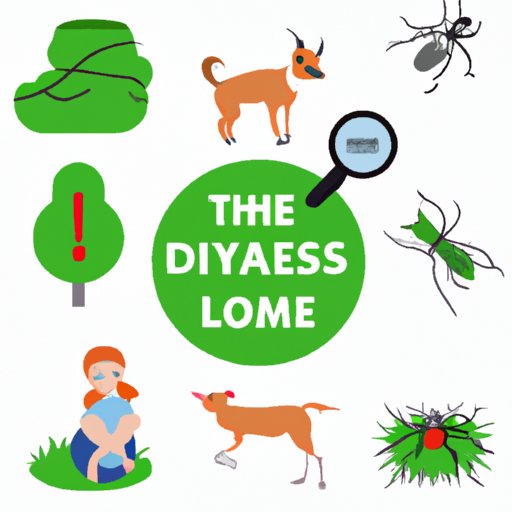
I. Introduction
Lyme disease is a bacterial infection that is transmitted to humans through the bite of an infected tick. The disease is caused by the bacterium Borrelia burgdorferi and can lead to a wide range of symptoms if left untreated. Lyme disease is prevalent mainly in the United States and Europe. It’s important to take precautions to avoid getting the disease. By taking certain preventive measures, individuals can greatly reduce their risk of contracting Lyme disease.
II. Participating in Outdoor Activities
Being outdoors for activities such as hiking, camping, and gardening can expose individuals to ticks and the bacteria that cause Lyme disease. It’s important to check for ticks and wear protective clothing to avoid tick bites. To avoid tick bites while participating in outdoor activities:
- Wear long pants and long-sleeved shirts
- Tuck pants into socks to prevent ticks from crawling up the legs
- Wear light-colored clothing to make it easier to spot ticks
- Apply insect repellent to exposed skin
- Check for ticks regularly and remove them promptly using tweezers
III. Pets
Pets can bring ticks into the home, increasing the risk of Lyme disease for both humans and animals. To protect pets from ticks and prevent them from bringing ticks into the home:
- Use tick preventatives and repellents on pets
- Check pets for ticks regularly and remove them promptly
- Keep pets out of high-risk areas, such as wooded or grassy areas
- Wash and groom pets regularly to remove any ticks that are present
IV. Geographic Locations
Some areas are at a higher risk for Lyme disease than others. It’s important to be aware of the risk in your specific area and take preventive measures.
Areas where Lyme disease is prevalent include:
- New England and the mid-Atlantic states in the United States
- Parts of Canada, Europe, and Asia
- Areas with tall grass, brush, and woods
To avoid tick bites in high-risk areas:
- Stay in the center of trails
- Avoid high grass and dense brush
- Wear protective clothing, such as long pants and sleeves
- Apply repellent that contains DEET to exposed skin
- Check for ticks regularly and remove them promptly using tweezers
V. Clothing Choices
Wearing protective clothing can greatly reduce the risk of tick bites, especially in high-risk areas. Clothing recommendations for individuals in high-risk areas include:
- Wear light-colored clothing to make it easier to spot ticks
- Wear long pants and long-sleeved shirts
- Tuck pants into socks to prevent ticks from crawling up the legs
- Wear closed-toe shoes
It’s also important to properly use protective gear, such as insect repellent. When using repellent, follow the instructions on the label and apply it to exposed skin. It’s also important to avoid applying repellent to cuts or wounds and to wash it off when returning indoors.
VI. Tick Removal
Proper tick removal is important in preventing Lyme disease. If you find a tick attached to your skin, follow these steps to safely remove it:
- Use fine-tipped tweezers to grip the tick as close to the skin’s surface as possible
- Slowly pull upward with steady, even pressure
- After removal, clean the bite area and your hands with rubbing alcohol or soap and water
- Dispose of the tick by placing it in a sealed bag or container, flushing it down the toilet, or placing it in alcohol
If you suspect you may have contracted Lyme disease, seek medical attention immediately. Early symptoms include a rash and flu-like symptoms, which usually appear 3 to 30 days after the tick bite.
VII. Symptoms
Early recognition of the symptoms of Lyme disease is important in preventing it from progressing. The early symptoms of Lyme disease include:
- A rash that resembles a bull’s-eye at the site of the tick bite
- Fever, chills, headache, fatigue, and muscle and joint aches
- Swollen lymph nodes
If you experience any of these symptoms after spending time outdoors in a high-risk area, seek medical attention promptly. In most cases, treatment with antibiotics is effective.
VIII. Conclusion
To avoid Lyme disease, individuals should take preventive measures such as wearing protective clothing, using insect repellent, and checking for ticks regularly. It’s also important to properly remove ticks and seek medical attention if you suspect you may have contracted Lyme disease. By sharing this information with others, we can help prevent the spread of this disease.





